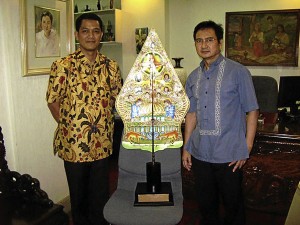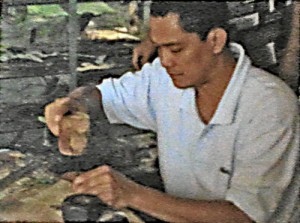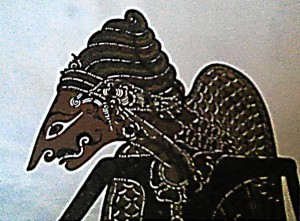
This idea of the blessed Pontiff becomes a reality when on Aug. 16, the University of Santo Tomas Museum opens an exhibition of Baroto Murti Anindito’s art works, entitled: “Wayang Wahyu: Biblical Art in indonesian Puppetry.”
Baroto employs the Indonesian art of shadow puppetry called Wayang to narrate Biblical stories. Except for some standard Christian art features like the halo and the cross, the Biblical characters are made to conform to the designs, colors, appearance and techniques of the Wayang.
The Wayang, which in Javanese literally means shadow, is considered as one of the important cultural heritages of Indonesia and most probably one of the world’s extant oldest theater art forms. In 2003 UNESCO declared the Wayang a Masterpiece of Oral and Intangible Heritage of Humanity.
Baroto writes about the technique of making shadow puppets, “The puppets used in the performances have intricate hand carvings and paintings on dried buffalo hide which are, in themselves highly-priced art pieces.” The performance of the Wayang is accompanied by music, literature and expression of cultural and philosophical sensibilities of the people. Baroto believes that, “The ethical values of the Wayang encompass personal, cultural, moral, political and religious realms, capable of arousing solidarity and unity. As such, it has become a vital element of the identity of Indonesian people and was instrumental in the formation of a national character.”
Gospel puppetry

This multimedia exhibition features some of the original shadow puppets done by Baroto, photographs and an audio-visual presentation that shows how the intricate puppets are made and how they are actually handled during an actual Wayang performance.

The exhibition runs Aug. 16-Sept. 2. It is open to the public. For invitation for the opening day, museum viewing schedule and other details, contact the UST Museum at 7811815, 7409718, 4061611 loc. 8337 or e-mail to museum@mnl.ust.edu.ph.

